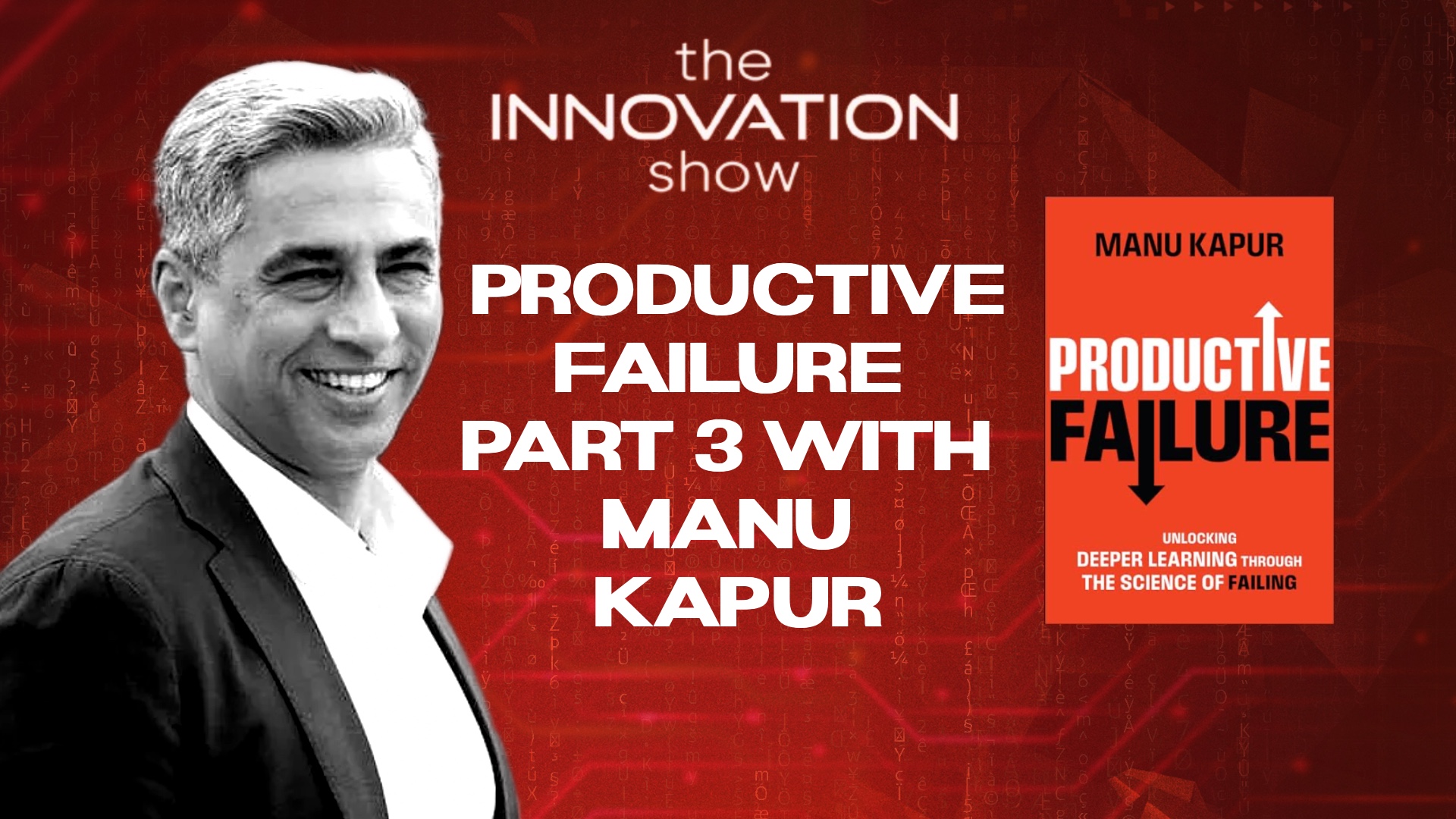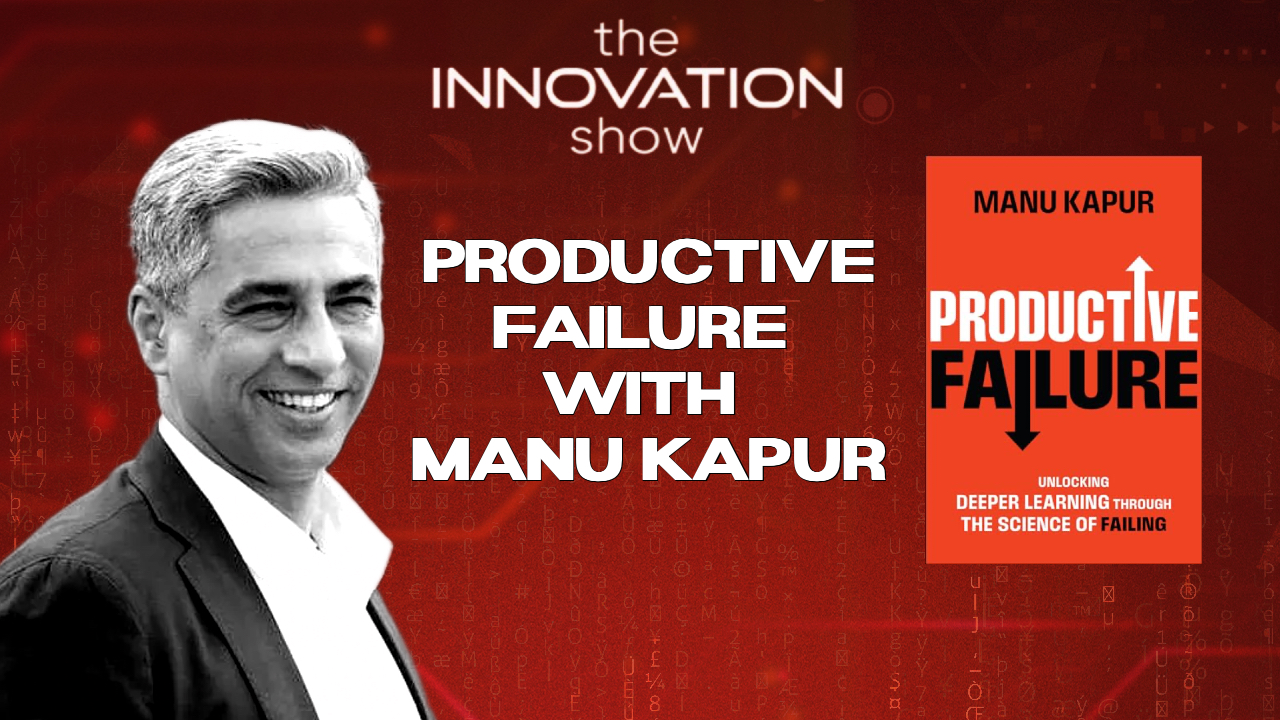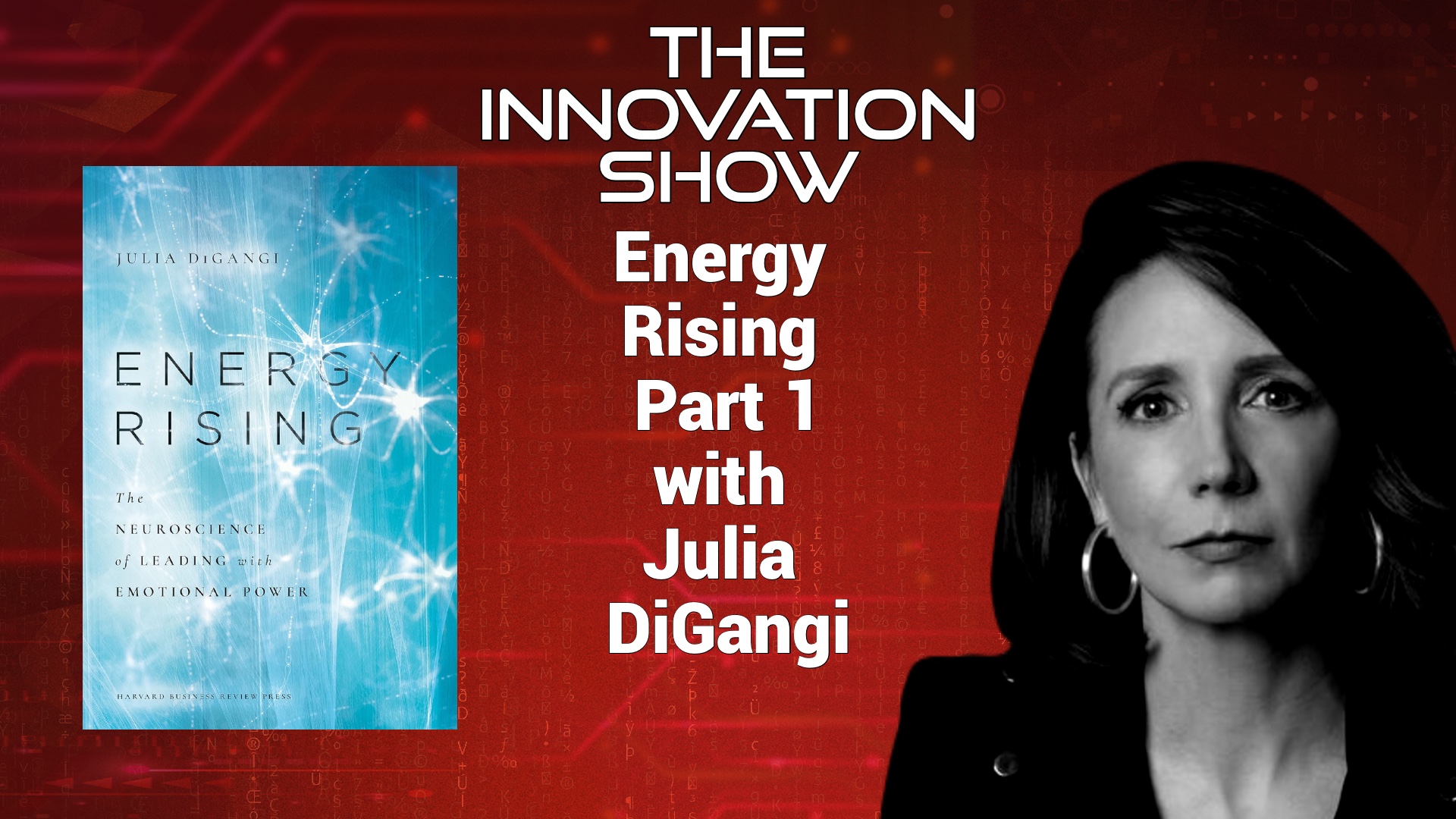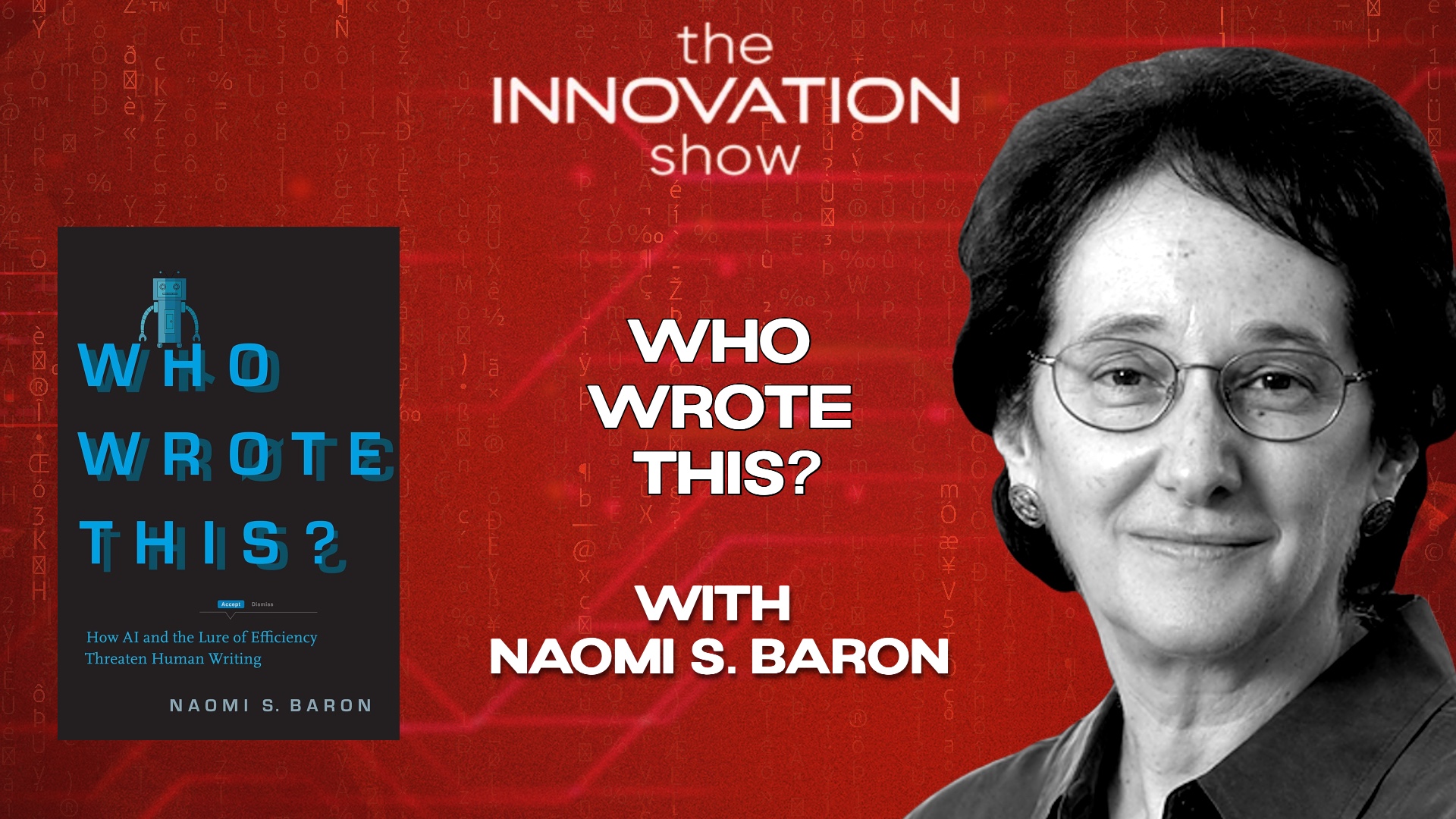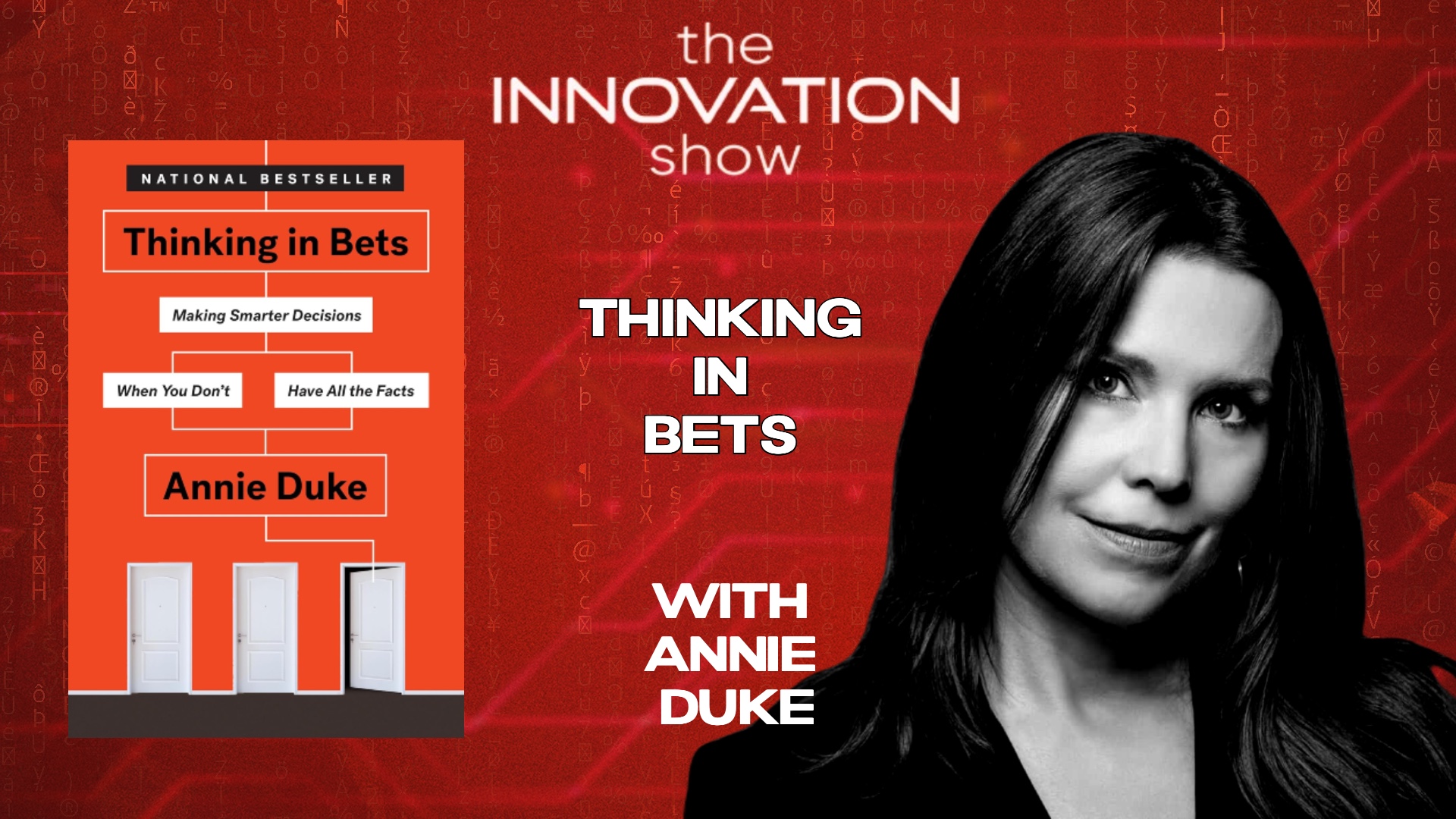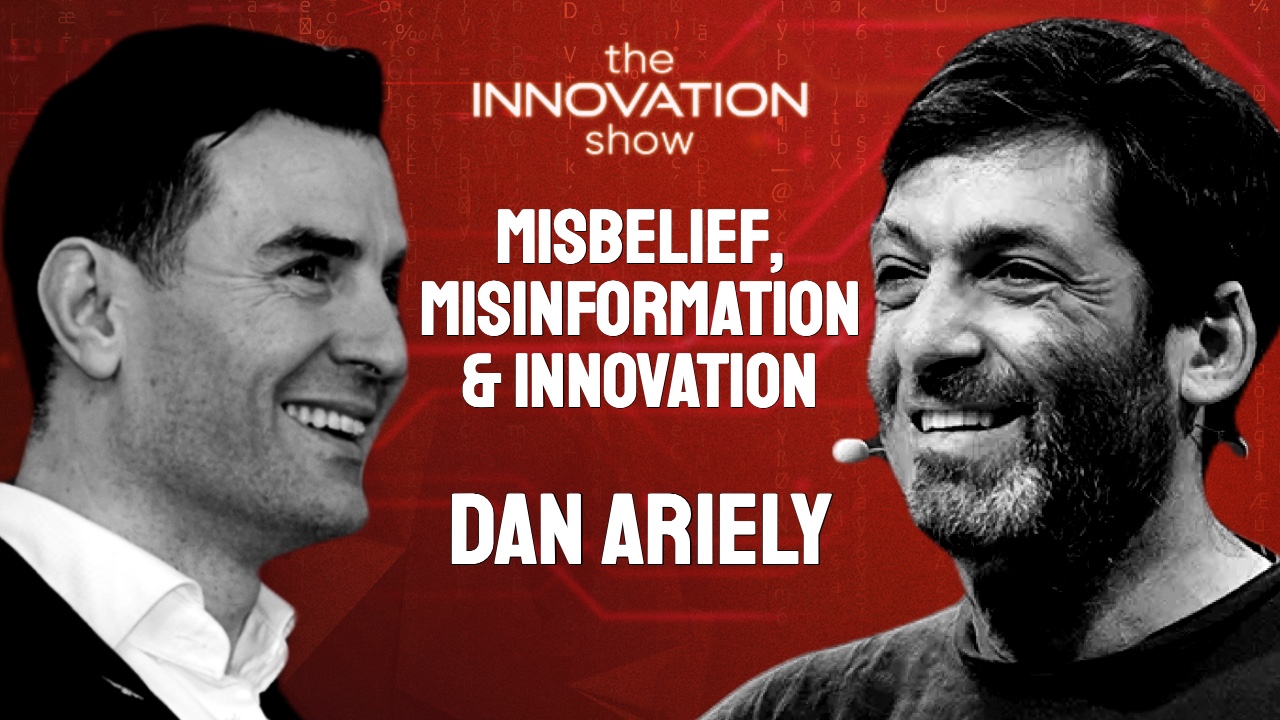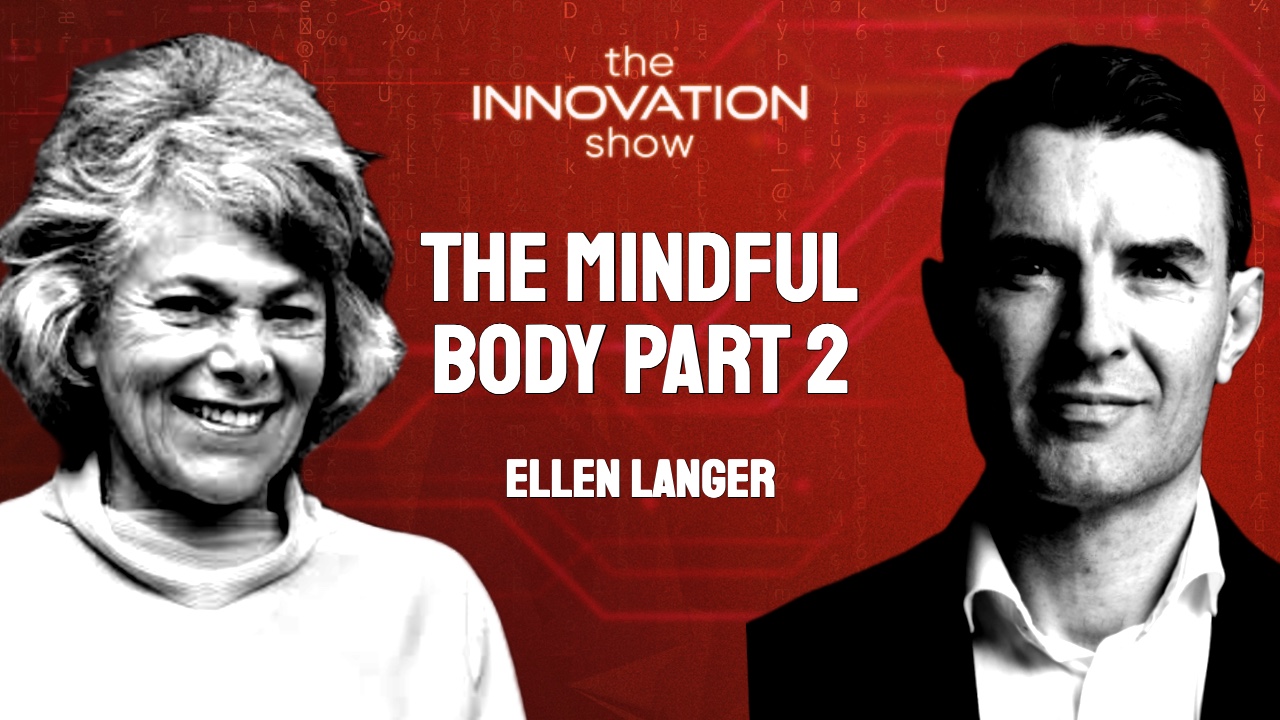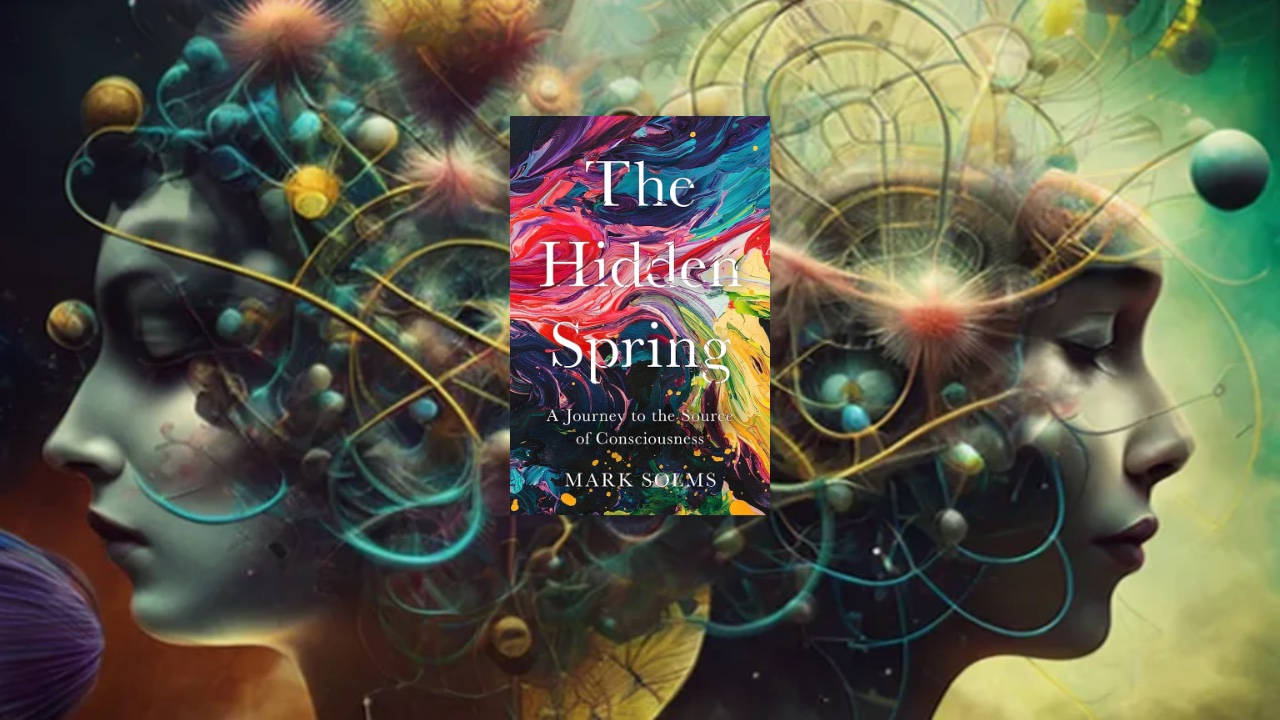Discover how leaders can navigate complexity using BANI+ and VUCA+ frameworks. Bob Johansen and Jamais Cascio join Aidan McCullen to explore empathy, ethical AI, and future-ready thinking.
Posted 3 months ago Tagged Aidan McCullen Cognitive Dissonance deep learning strategies education podcast Education Reform failure as a tool failure in education innovation podcast Innovation Show instructional design kapur productive failure knowledge building learning science learning through struggle Manu Kapur podcast episode problem-solving skills Productive Failure Thought Leadership
Prof. Manu Kapur joins Aidan McCullen for part 3 of our Innovation Show series on “productive failure.” Discover why initial struggle fosters deeper learning, how to design for failure in education and beyond, and how to unlock insights through cognitive dissonance.
Posted 4 months ago Tagged Adaptive Learning Aidan McCullen Creativity and Failure Deep Learning Educational Psychology Failure and Success growth mindset Innovation in Education Innovation Mindset Leadership and Change Learning and Education Lifelong Learning Manu Kapur Overcoming Setbacks Productive Failure Resilience and Failure Teaching and Learning Strategies The Innovation Show
Manu Kapur joins The Innovation Show to discuss his book Productive Failure, showing how failure fuels deeper learning, creativity, and adaptability in education, business, and life.
Posted 1 year ago Tagged Aidan McCullen emotional energy emotional intelligence emotional intelligence in leadership emotional power emotional resilience Energy Rising handling emotional pain Julia DiGangi Leadership Skills leading through change managing stress managing uncertainty neuropsychology neuroscience of emotions overcoming self-division personal growth professional development self-awareness workplace leadership
Julia DiGangi, neuropsychologist and author of ‘Energy Rising,’ unveils how emotional energy shapes our lives. From navigating uncertainty to cultivating leadership through emotional intelligence, Julia offers profound and practical insights for personal and professional transformation.
Posted 1 year ago Tagged academic writing AI in education AI writing tools Aidan McCullen artificial intelligence in education author interviews authorship book discussion ChatGPT copyright issues with AI creative writing digital impact on learning digital writing vs. handwriting embodied cognition ethical concerns of AI future of writing human creativity intellectual property language and literacy Naomi S. Baron OpenAI originality in writing technology and writing skills The Innovation Show thinking skills writing and thinking connection
In this enlightening episode, Naomi S. Baron, author of ‘Who Wrote This?’, discusses the profound effects of AI writing tools on our ability to think, write, and create authentically. We explore the nuances of human creativity, the struggle that shapes meaningful writing, and the ethical dilemmas surrounding AI in education and intellectual property.
Posted 1 year ago Tagged Aidan McCullen Annie Duke cognitive psychology Cognitive Science decision making decision quality Eric Seidel Executive Education feedback loops game theory optimal Innovation Marshawn Lynch National Science Foundation NFL Pete Carroll poker precommitment contracts quit resulting risk assessment Seahawks Super Bowl Thinking in Bets uncertainty
Join Annie Duke to explore her bestseling book, Thinking in Bets, linking NFL strategies, poker psychology, and decision-making in business. Learn how to improve decision quality, manage uncertainty, and apply cognitive science to innovation and risk assessment.
Posted 2 years ago Tagged Aidan McCullen Behavioral Economics Business Cognitive Bias Cognitive Dissonance Conspiracy Theories Dan Ariely Dunning-Kruger Effect empathy Fake News Identity and Belief Innovation Leadership Misbelief Misinformation Political Affiliation Psychology Resilience Secure Attachment Shibboleth Social Media Stress and Misbelief Transformation Trust in Society
This episode features Dan Ariely, author of ‘Misbelief, what makes rational people believe irrational things’, focusing on the psychology behind misinformation and belief in conspiracy theories.
Posted 2 years ago Tagged Aidan McCullen Business Leadership
Discover Ellen Langer’s transformative insights on mindfulness and positive psychology for boosting creativity and innovation, on the innovation show.
Posted 2 years ago Tagged Aidan McCullen Business Corporate Culture Disruption Entrepreneurship Innovation Leadership Strategy Technology Transformation
The ‘private lawn’ is the ability to have the time and space to plan, think and grow. For some of us, daily survival consumes all our time and energy, leaving no room for strategic thinking or planning. Few organisations carve out the time to plan, strategise and think about long-term goals and objectives.
As business leaders, creating an environment where everyone can access their ‘private lawn’ – a space for growth, planning, and forward-thinking is crucial. However, we must also plan by priority.
Posted 2 years ago Tagged Aidan McCullen Business Consciousness Entrepreneurship Entropy Homeostasis Human Potential Innovation Leadership Mark Solms Markov Blankets Technology The Free Energy Principle The hidden spring Undisruptable
It is a pleasure to welcome the author of The Hidden Spring: A Journey to the Source of Consciousness, Mark Solms. In this episode, we talk about the brain’s prediction system.
00:00:00.000 Introduction and Overview of the Chapter
00:03:30.388 Establishment of the Meteorology Department
00:11:59.546 The Fundamental Task: Minimizing Free Energy
00:15:43.370 Feelings: Connecting Us to Our Ancestors
00:19:36.790 Neglecting the inter-receptive and extra-receptive in cognitive science
00:22:30.002 The brain’s attempt to contain environmental effects on the organism
00:31:32.675 Innate Predictions: Fear and Instinctual Behaviors
00:34:19.723 The Evolution of Responses and Predictive Model Complexification
00:42:59.118 The Brain: Ones and Zeroes, Predictions and Errors
00:54:18.834 The Brain as an Organization
00:59:57.338 Emotional Needs and Scripts

